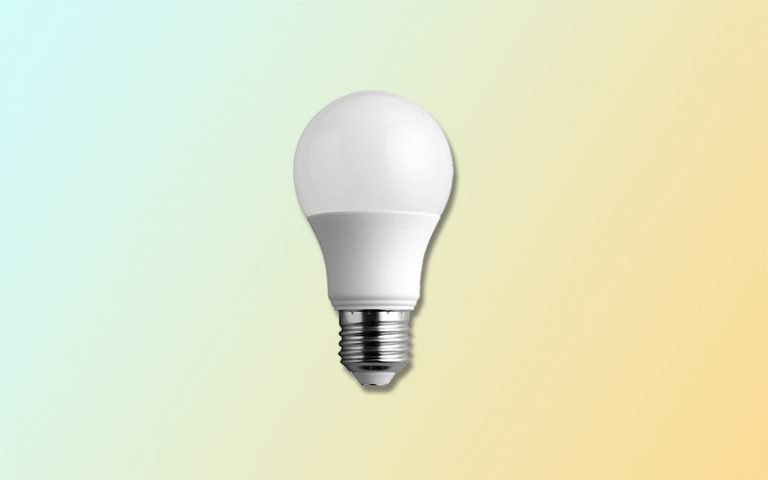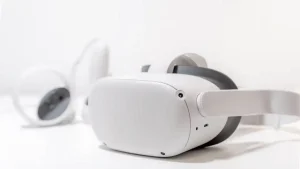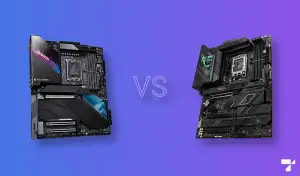A smart bulb is an internet-capable LED light bulb that allows you to customize, schedule, and remotely control your lighting. They have become extremely popular over the last few years. However, the question of “How long do smart bulbs last?” is one consistently asked by many current and potential smart bulb users. Therefore, in this article, we have created a comprehensive guide explaining how long smart bulbs last as well as other factors you should consider.
How long do smart bulbs last?
Smart bulbs can last anywhere between 15,000 to 25,000 hours on average. That’s 25 times longer than an incandescent bulb, 5 times longer than a CFL, and 2 times shorter than a pure LED (light-emitting diode) bulb. The manufacturer’s rated lifespan could be less than the actual lifespan of a smart bulb since the manufacturers use conservative estimates for bulb usage. You can check the product packaging and inserts to get a more detailed estimate of the daily usage they used to calculate the bulb’s rating. Check their estimated usage per day as this will help you calculate the bulb’s true lifespan.
Using a uniform usage estimate of 6 hours per day, we can get a lifespan average of 15,000 to 20,00 hours for most smart light bulbs. So, expect your light bulbs to have a shorter lifespan if you use them for more than six hours on average.
How to calculate the number of years a smart bulb will last?
The formula for calculating the number of years a smart bulb can last is simple: take the number of hours a smart bulb is rated to last and divide it by the product of 365 days multiplied by your average daily use in hours, or n/(d*365), with n = rated hours and d = average daily use.
For example, using the formula provided above, a smart bulb rated for 25,000 hours that’s used 6 hours per day can last 11.4 years.
Comparison table of how long top smart bulbs last
| Smart bulb companies | Rated hours | Years (6 hours a day usage) | Warranty (Years) |
|---|---|---|---|
| Philips Hue 1st Generation | 15,000 | 6.8 | 2 years |
| Philips Hue 2nd & 3rd Generation | 25,000 | 11.4 | 3 years |
| Sengled regular LED | 25,000 | 11.4 | 3 years |
| Sengled extra bright | 15,000 | 6.8 | 3 years |
| Wyze | 20,000 | 9.1 | 1 year |
| Lifx | 25,000 | 11.4 | 2 years |
| TP-Link | 25,000 | 11.4 | 2 years |
The average lifespan of 5 highly rated Smart Bulbs
How long do Philips hue bulbs last?
First-generation Philips Hue bulbs last 15,000 hours while second and third-generation light bulbs can last 25,000 hours. This can average anywhere from 6 to 11 years depending on how much you use the bulb daily. Philips Hue Bulbs are generally good, quality-wise, so their lifespan depends only on how much you use them.
Philips Hue Bulb
How long do Sengled smart bulbs last?
The regular Sengled smart LED bulbs last 25,000 hours while the extra-bright smart bulbs last 15,000 hours. That’s 11 years for the regular bulbs and 6 years for the extra-bright bulbs. Like common LED bulbs, Sengled smart bulbs last longer, and should not burn out quickly.
Sengled Smart Bulb
How long do Wyze smart bulbs last?
Wyze smart bulbs last 20,000 hours or 9 years. Not as long as some of the bulbs on our list but also not as short as Philips Hue’s 1st generation bulbs. They’re still LED bulbs so they should last for quite a long time and shouldn’t need replacing below their warranty years.
Wyze Smart Bulb
How long do Lifx smart bulbs last?
Lifx smart bulbs last 25,000 hours or 11 years. Same as with Sengled and Philips Hue 2nd and 3rd generation smart bulbs. They last quite a long time, so if you have one burnout under the warranty years, you can still ask for a replacement. Their reputation is as a quality smart bulb maker is tip-top though, so their rated lifespan is dependable.
Lifx Smart Bulb
How long do tp-link smart bulbs last?
TP-Link smart bulbs last 25,000 hours or 11 years. Most modern LED smart bulbs last this long as FTC standards require they meet the minimum (which is 15,000 hours). Most manufacturers opt to go for the safe side and make their smart bulbs last longer than the minimum.
Kasa Smart Light Bulb
Other things to consider when buying smart bulbs
Which Smart Home Ecosystem
Smart bulbs’ smart home ecosystem can vary wildly. For example, Philips Hue Smart Bulbs can work with Amazon Alexa, Apple HomeKit, Google Assistant, IFTTT, Razer, Samsung Smart Things, Logitech Harmony, Vivint Smart Home, Xfinity Home, August Home, and Yale smart locks.
Meanwhile, Sengled Smart Bulbs only work with Amazon Alexa, Google Assistant, and Apple HomeKit, while Wyze Smart Bulbs only work with Amazon Alexa and Google Assistant. Generally speaking, you want a smart bulb that is compatible with more smart ecosystems. Just take note of this compatibility issue before buying smart bulbs. Check what ecosystem you have at home and check if the smart bulb is compatible with it.
Wattage and lumens
Wattage is the amount of electricity (measured in watts) it takes to light up the bulb. Lumens are the amount of light the bulb produces. The lower the watts used, the lower your electricity bill is. If you want energy efficiency, you want a lower wattage bulb with a higher lumen. The chart below gives you a good idea of how many watts each type of bulb consumes and how many lumens they produce.
| 450 lumens | 800 lumens | 1100 lumens | 1600 lumens | 2600 lumens | 5800 lumens | |
|---|---|---|---|---|---|---|
| LED | 6 watts | 9 – 10 watts | 13 watts | 16-18 watts | 24 watts | 45 watts |
| CFL | 8 – 9 watts | 13 – 14 watts | 18 – 19 watts | 23 watts | 40 watts | 85 watts |
| Incandescent | 40 watts | 60 watts | 75 watts | 100 watts | 150 watts | 300 watts |
| Halogen | 29 watts | 43 watts | 53 watts | 72 watts | 150 watts | 300 watts |
Color temperature
Some people dislike warm-colored light bulbs and prefer cool white light bulbs. Some people like the warm, cozy feeling of yellowish light bulbs. Light bulbs’ color temperature is measured in Kelvin (K). The lowest, at 2700K appears yellowish in color. As it increases up to 6500K, it achieves daylight or natural light color. Take this into consideration when choosing your smart bulbs. You want a color temperature that you can tolerate. Soft white ranges from 2700K to 3000K. Warm white ranges from 3000K to 4000K, while bright white is from 4000K to 5000K, and Daylight is 5000K to 6500K.
| Color Temperature | 2700K | 3000K | 5000K |
| Light Appearance | Warm white | Warm white | Cool daylight |
| Ambience | Cozy, inviting | Warm, welcoming | Crisp, invigorating |
| Best for | Living rooms, kitchens, bedrooms, lamps, pendants, chandeliers | Bathrooms, entryways, outdoors, vanity lighting, overhead lighting | Basement, garages, security lighting, task lighting |
Brightness equivalence in wattage
If you’re simply looking to replace your old light bulbs with smart bulbs (all smart bulbs are LED), use this chart to compare the wattage of your old bulbs with LED bulbs to get the same brightness.
| LED | Halogen | CFL | Incandescent |
|---|---|---|---|
| 14 – 16 watts | 72 watts | 23 watts | 100 watts |
| 12 – 13 watts | 53 watts | 20 watts | 75 watts |
| 8 – 9 watts | 43 watts | 15 watts | 60 watts |
Where you will put the light bulb
Kitchen – requires at least 3500K. You would want a brighter bulb for your ceiling and a dimmer bulb for your under-cabinet lighting.
Bedroom – this depends on the color temperature you prefer. For lamps, you want 2700K.
Bathroom – at least 4000K or higher, depending on how bright you need it to be.
Family Room – depends on how high the ceiling is. The higher it is, the higher the lumens you need. For table lamps and other small light fixtures, you want warmer color temperatures.
Garage – this area needs bright bulbs. At least 5000K.
Outdoors and Backyard – you need the brightest bulbs here of daylight color. Backyard floodlights reach at least 6500K.
Dimmer-capable or not
Not all LED bulbs are dimmer-capable. If it is, it still needs to have a compatible dimmer. Most old dimmers are incompatible with LED bulbs. You want an ELV (Electronic Low Voltage) dimmer.
Environmental conditions
Some smart bulbs are weatherproof, others are not and can only be used indoors. Check its technical specifications to see what kind of weather conditions it can endure.
Cross-compatibility
Some smart bulbs only work with their native apps and some work with a wide variety of apps. Check the manufacturer’s label to see what apps are compatible with the smart bulb you’re buying.
Smart light bulb FAQs
Do smart bulbs last longer than regular bulbs?
Yes. Smart bulbs last longer than regular light bulbs (incandescent) by a factor of 25. They can last longer because of the LED. Regular bulbs only have tungsten filament inside, which burns out faster.
Do smart bulbs burn out?
Yes. All bulbs eventually burn out. Even smart bulbs. When its semiconductor fails, the LED eventually stops emitting light.
How often do smart bulbs need to be replaced?
Smart bulbs need to be replaced every 6 to 11 years on average depending on how long the bulb is rated to last based on 6 hours per day usage. You may need to replace a smart bulb earlier if you use it for more than 6 hours a day on average.
How long do LED bulbs last?
Pure LED bulbs (that are not smart) last twice as long as smart LED bulbs. The reason for this is smart bulb’s constant change of electric current wears out its semiconductor faster than a pure LED bulb. With conservative use, pure LED bulbs can last anywhere between 12 to 20 years.
How long do incandescent light bulbs last?
Incandescent light bulbs last 25 times shorter than smart LED bulbs. That’s because they generate a lot of heat and therefore burn through their filament faster. A fluctuating current also makes the filament burn out faster.
What’s the difference between a smart LED bulb and a purely LED bulb?
A smart LED bulb has internet capability and other functionalities that a pure LED bulb doesn’t provide. A pure LED bulb is simply a regular bulb that you need to switch on/off manually. Though pure LED bulbs do last considerably longer the Smart LED bulbs. However, the smart capabilities, functionalities, and convenience of smart LED bulbs along with the fact that they last quite long as well make them the better option when compared to pure LED bulbs.
Are smart bulbs worth it?
Yes, smart bulbs are worth it. The smart capabilities and functionality provide added convenience, automation, and efficiency. Smart Bulbs also last a very long time when compared to other traditional non-LED bulbs.
What’s the difference between smart bulbs and other types of bulbs?
Smart Bulbs are internet-capable LED bulbs that last considerably longer than other types of bulbs. Those other types of bulbs include incandescent, fluorescent, Compact Fluorescent Lamps (CFL), and Halogen bulbs which are not internet-capable and do not last as long as LED smart bulbs.



